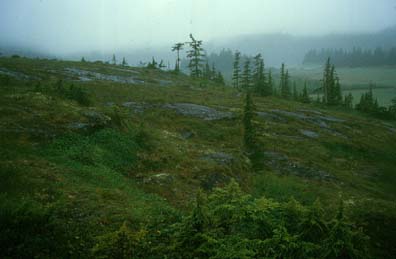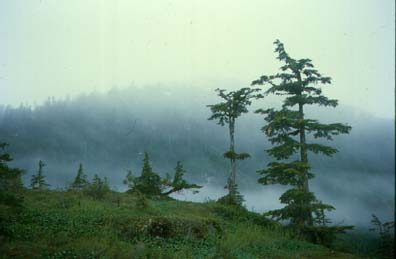| 2. This view shows open parkland on the north side of the bedrock knob shown in photo 3 of the flyover tour. Muskeg has developed over shallow granitic bedrock while mountain hemlock (Tsuga mertensiana) grows in isolated clusters and stands. This area was beyond the limits of the most recent ice advance and is typical of areas around western Prince William Sound where muskeg and forest growth has been uninterrupted by geologic processes for millennia. |  |
 |
3. This closer view
of mountain hemlock shows the typical layered growth form of these conifers
when mature. Several trees cored on this bedrock knob were over 600
years old.
|